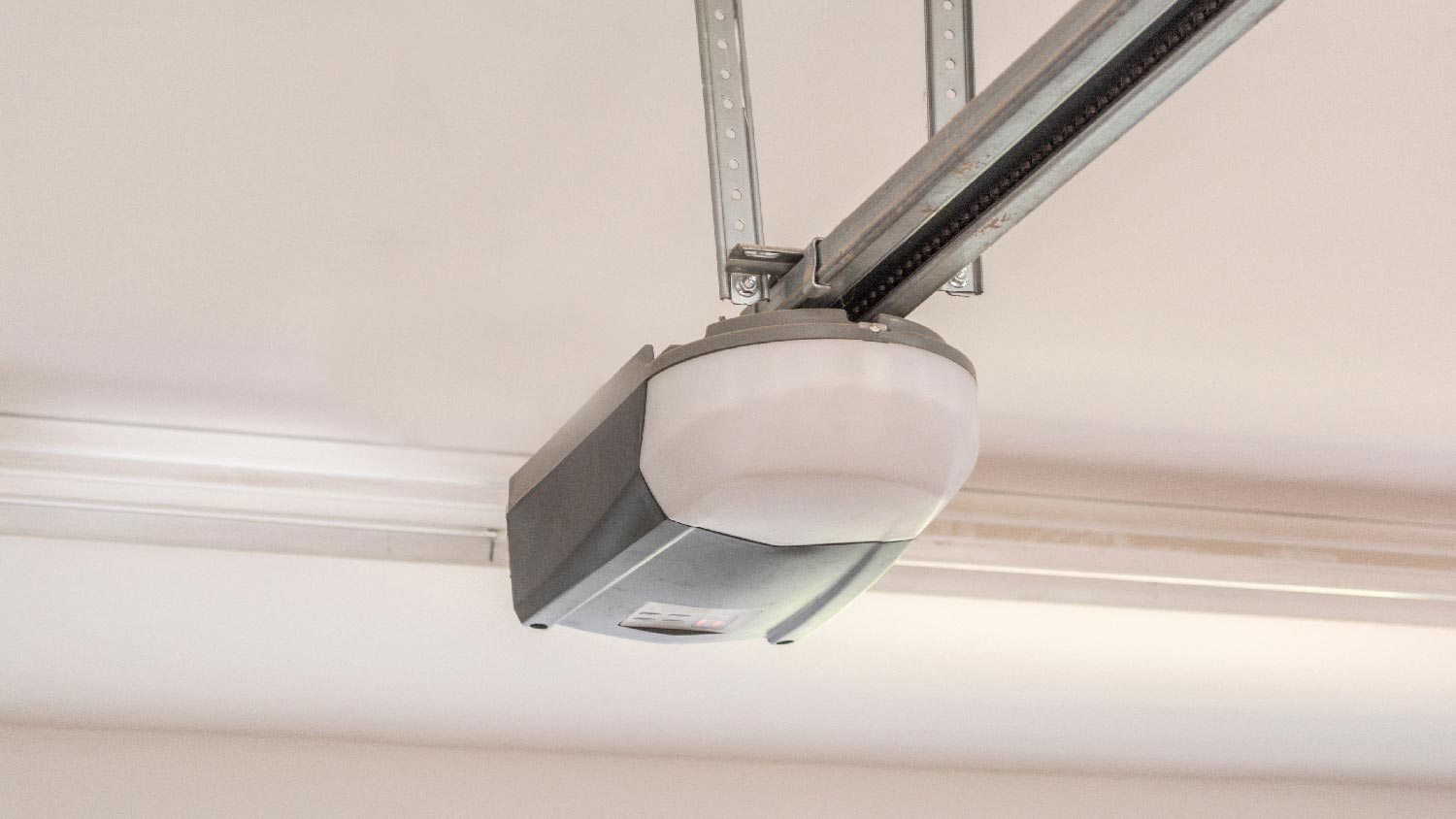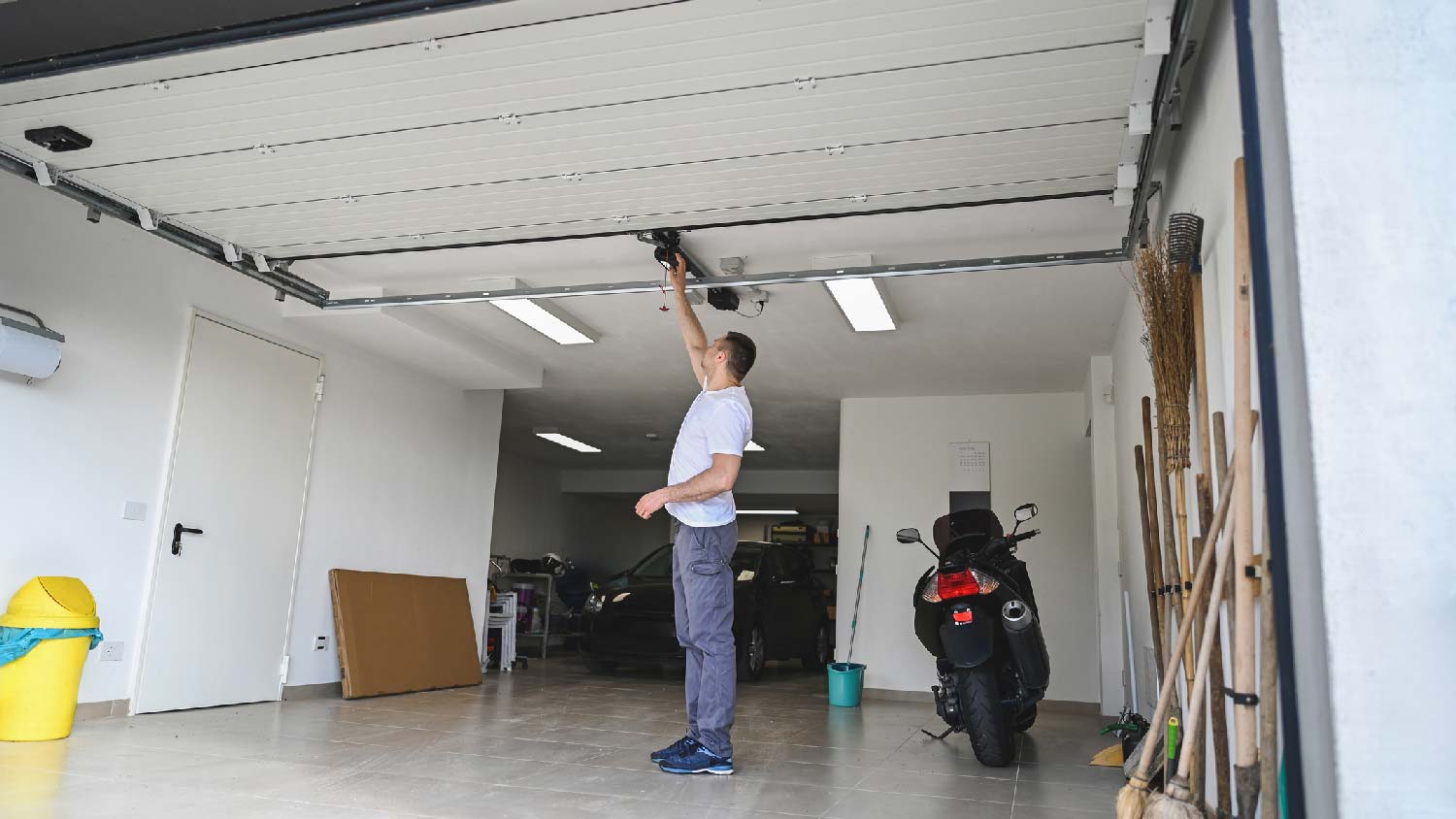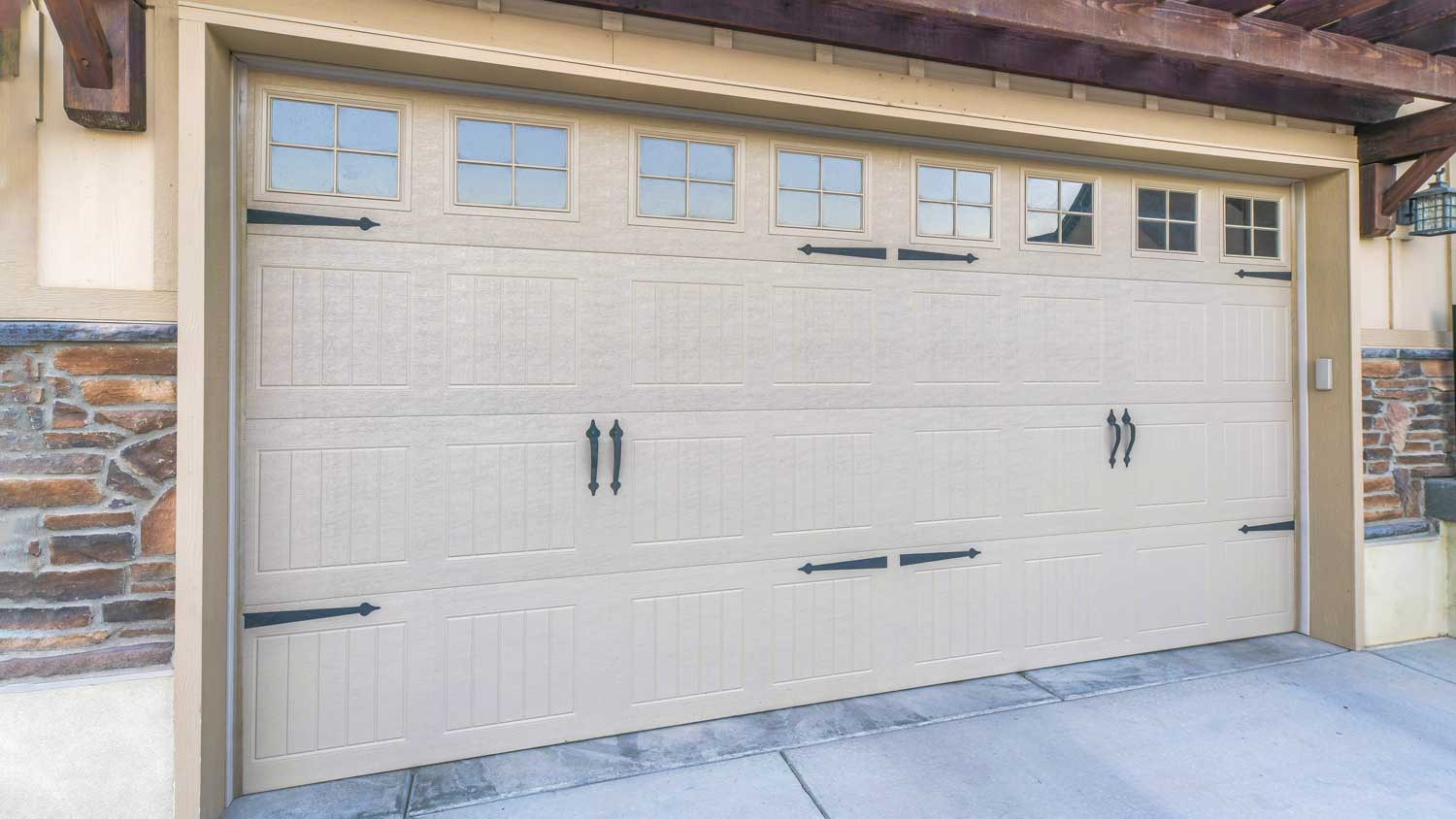Chain vs. Belt Drive Garage Door Opener: Differences and Similarities
See which carries the most weight in a face-off between belt vs. chain garage door openers


Chain drives cost less but have a shorter lifespan.
Belt drives are much quieter than chain drives.
For heavy doors, choose a chain drive garage door opener.
Pick a chain drive opener if you live in a humid or hot climate.
Chain drives require more maintenance than belt drives.
Whether your old garage door opener kicked the bucket or you’re adding the final touches to your home to complete your brand-new garage door, one thing’s for sure: a lot can depend on a garage door opener. But which one is best? This comparison guide can help you decide between chain vs. belt drive garage door openers once and for all.
Chain Drive vs. Belt Drive Garage Door Opener: Key Differences
Both garage door openers are garage door parts that operate your garage, but several key differences can impact which is the best option for your home. Chain drives cost less, can lift more weight, and operate well in hot, humid climates, but their noisiness can make them less suitable for residential homes. Belt drives have a higher price tag and can slip in warm, wet temperatures, but they last longer, need minimal maintenance, and operate quietly.
What Is a Chain Drive Garage Door Opener?

A chain drive garage door uses—you guessed it—a metal chain as primary mechanism for opening and closing your garage door. Combined with tension springs, the chain runs across a rail to lift heavy garage door types. This makes them suitable for two- and three-car garage doors and wooden garage doors or glass garage doors. Chain drive garage door openers come with many strengths, but they also have some downsides to consider:
| Pros | Cons |
|---|---|
| Low upfront cost | Loud operation |
| High weight capacity | Lower lifespan |
| Not susceptible to temperature and moisture | Requires more maintenance |
Best for:
Garages with heavy or large doors
Those on a budget
Garages in humid, high-heat climates
Pros of Chain Drive Garage Door Openers
Chain drive garage door openers cost between $150 and $250 on average, making them the most budget-friendly type of garage door opener on the market. Because of the tension of the garage door springs and strength of the chains, these openers have a higher weight capacity than belt drive openers.
Chain drives also operate effectively in the hottest, most humid environments, making them suitable for southern regions where humidity and high temperatures can play a role in the efficacy of the operating system.
Cons of Chain Drive Garage Door Openers
There are a few downsides to choosing a chain drive garage door opener. For one, the system has a reputation for being loud, so you can say goodbye to silently leaving without waking or disturbing your family. Another disadvantage is that chain drives have a shorter lifespan than belt drives due to the increased friction from the moving chains.
Homeowners looking for a low-maintenance garage door opener should steer clear of chain drives. The metal chains need regular lubrication—at least twice a year. Forgetting to maintain your chain drive garage door opener could result in mechanical problems and a decreased lifespan.
What Is a Belt Drive Garage Door Opener?

A belt drive garage door opener uses a belt on a trolley system to open and shut the door. This rubber belt offers a stealthy alternative to louder, traditional garage door openers, but you’ll want to consider the following pros and cons to help you decide whether or not a belt drive is the right choice.
| Pros | Cons |
|---|---|
| Quieter operation | Higher upfront cost |
| Longer lifespan | Lower weight capacity |
| Low maintenance | Susceptible to moisture and heat |
Best for:
Those who want a low-maintenance garage door opener
Single-car garages and lightweight doors
Attached garages where sound may be an issue
Pros of Belt Drive Garage Door Openers
Belt drive garage door openers have a quiet rubber belt that decreases disturbances while in use. This belt requires minimal maintenance and has a longer lifespan than chain-drive openers since it doesn’t have any metal parts that could cause friction against the railing.
Cons of Belt Drive Garage Door Openers
Belt drive garage door openers cost between $160 and $350 on average—around $55 more than chain-drive openers. They also have a lower weight capacity, making them unsuitable for many types and sizes of garage doors, including wooden, glass, and steel doors and some two-car and three-car garages. Insulating your garage door can also make other materials too heavy.
Additionally, belt drive openers can sometimes slip or become loose in moist or hot environments, which can delay your ability to leave home.
Chain vs. Belt Drive Garage Door Opener

While chain and belt drives both come with their respective pros and cons, they each have an edge over the other in some ways. Below, we’ve compared the two types of garage door openers to see how they stack up against each other.
Durability: Belt Drive
Chain drives require more maintenance than belt drives, increasing the likelihood of experiencing wear and tear if you forget to lubricate the chains. Even with meticulous maintenance, unavoidable friction on the metal chains will cause your chain drive to wear down faster. The rubber in belt drives can also break down over time, but it’s far easier to replace than metal chains.
Ease of Installation/DIYability: Belt Drive
Belt drives are easier to install than chain drives, but both garage door openers are best left for the pros. Installing a garage door opener yourself can be dangerous—especially if you’ve never done it before. A professional garage door installer near you knows how to safely and accurately install your new garage door opener.
Ease of Repair/DIYability: Belt Drive
Similarly, replacing or repairing a belt drive is typically easier than a chain drive. Since belt drives have fewer parts, a professional can repair or replace broken garage door parts faster, with fewer complications.
Length of Life: Belt Drive
Belt drives have an average lifespan of 15 to 20 years, while chain drives last anywhere from 10 to 15 depending on the usage, weight, quality, and level of maintenance. A chain drive’s shorter lifespan comes from the natural wear and tear of the chains against the metal railing over time. Since belt drives don’t use chains, they offer a longer lifespan.
Maintenance: Belt Drive
Chain drives need regular maintenance to prevent the chains from rubbing against the metal tracks. You’ll need to lubricate the chains every six months to keep things running smoothly. If any debris gets into the track, this could increase friction and impair the functionality of the chain drive. You may also need to readjust the chains from time to time. This is best left to a professional garage mechanic.
Belt drives, on the other hand, don’t need lubrication but can slip and require adjusting due to too much moisture or temperature fluctuations.
Noise: Belt Drive
Unless you enjoy the symphony of metal against metal, the loudness of a chain garage door opener can detract from day-to-day life by waking up family members and making subtitles a must when your loved ones return home while you’re watching your favorite shows. Belt drives offer a quieter solution that can be one of the biggest determining factors in which drive you choose.
Performance: Chain Drive
Belt drives can slip when operating in high heat or very humid conditions, whereas chain drives perform well in most climates. Consider your climate when determining the best type of garage door opener to avoid this issue.
Price: Chain Drive
The average garage door opener costs between $225 and $550 to install. Chain drives cost between $10 and $100 less to install than belt drives, making them more affordable upfront. Both will cost more if you have additional features, like garage door sensors, which cost around $160 extra.
Speed: Belt Drive
When you’re running late, even a few seconds or minutes can seem like a lifetime and make a difference in how quickly you’re out the door. Belt drives have the upper edge on chain drives when it comes to speed, so if you’re chronically late, you might want to choose this type of garage door opener.
Strength: Chain Drive
Overall, belt drives are the better option for residential homes. However, there is one exception: strength. Belt drives simply can’t pull as much weight as their chain drive competitors, which can put them out of the race before the bell has a chance to ring. Most one-car garages can get away with a belt drive, but you’ll need a lightweight fiberglass or aluminum garage door if you have a two-car garage.














